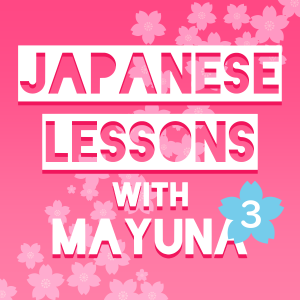Recent Posts
-
S3E6. 近所のカフェ
はい、こんにちは 今回はポッドキャストのシーズン3の6回目です。大阪は最近暑いです。夏は気分が明るくなるのでいいですね。先月は二人の生徒さんが旅行で大阪に来たので、一緒に夕食を食べに行きました。とても楽しかったです。
-
S3E5. 新しい計画
はい、こんにちは。今回はポッドキャストのシーズン3の5回目です。前回のエピソードで体調不良についてお話ししたら、何人かの生徒さんが心配してくれました。検査は受けていませんが、症状はもう治りました。おそらく、ただの食中毒だったと思います。私は元気です。いつもポッドキャストを聞いてくださって、ありがとうございます。
-
S3E4. 食中毒でした
はい、こんにちは。今回はポッドキャストのシーズン3の4回目です。もう3月ですが、まだ寒い日が続きます。そういえば、久しぶりに新しい記事を書きました。形容詞の活用についての記事です。私のウェブサイトにあるので、形容詞を復習したい人は見てください。
Search
Recent Posts:
- S3E6. 近所のカフェ May 9, 2024
- S3E5. 新しい計画 March 22, 2024
- S3E4. 食中毒でした March 11, 2024
- Basics of Japanese Adjective Conjugation March 10, 2024
- S3E3. ワイヤレスイヤホン February 28, 2024
